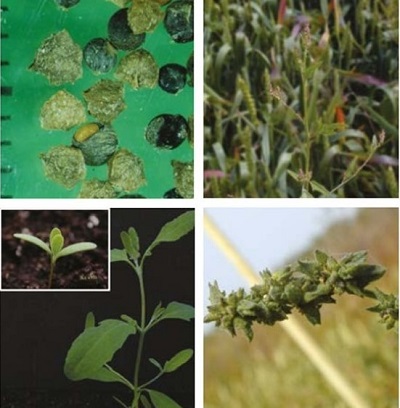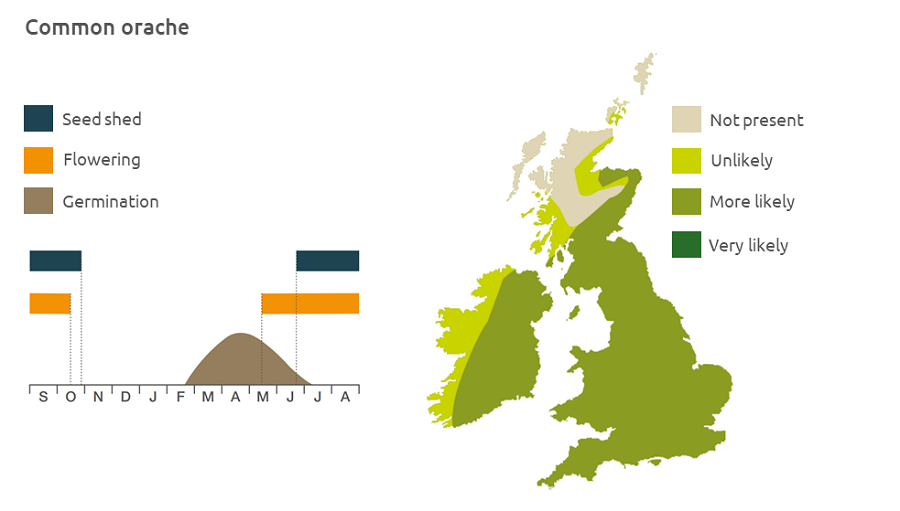- Home
- Knowledge library
- Distribution and biology of common orache in the UK
Distribution and biology of common orache in the UK
Common orache is a broad-leaved weed that is particularly common in broad-leaved crops, but the plants do not overwinter. Find out how to identify and control it.
Overview
Common orache (Atriplex patula) is particularly common in broad-leaved crops or fallow areas. Plants regenerate only by seed, which can be an impurity in crop seed, and may be spread by birds or small mammals. The plants do not overwinter. Early sown winter crops are usually too competitive to be affected by this spring-germinating species but the deep tap root can interfere with harvesting of beet crops.
- It is particularly competitive in spring crops
- It has value to biodiversity
Description
It is a sturdy annual plant, growing up to 80 cm tall. It has a branched stem and long, horizontally spreading branches. Leaves are initially mealy, later turning green on both sides. Flowers form in small clusters along the flowering stalk, the female flowers are pyramid-shaped.
Key features
Plant: The young leaves are mealy. The shoots of the growing plants have upright triangular leaves at the top.
Lookalikes
Common orache may be confused with fat-hen: fat-hen and Good King Henry also have mealy leaves. Orache has broader cotyledon stalks with leaf and cotyledon having a bright-green underside, whilst young fat-hen plants may be bright purple on the underside of the cotyledons.

Location and life cycle

Geographic distribution
Common orache is mainly a lowland weed but can grow up to an altitude of 400 m. It is found on arable land, on manure heaps, demolition sites, and areas with a large amount of bare soil.
Soil type
It prefers moist soils with pH > 5.
Seed statistics
- Seed longevity: >5 years
- Seed weight: 2 mg
- Seeds/plant: 100–6,000
Management
Minimum tillage may reduce emergence.
For advice on herbicides, please speak with your agronomist or adviser.
When was this information last updated?
This page is based on content from the encyclopaedia of arable weeds publication. Since it was first released in 2008, the publication has been redesigned several times but not revised. However, it remains a good foundation for general information on the distribution and biology of weeds.

